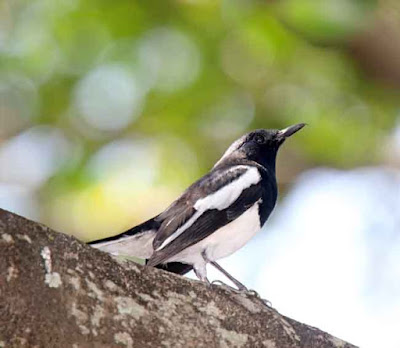Wrens are small active brown birds. Many of the tropical rain forest species are very wary and difficult to see and photograph. However with perseverance, you can see and photograph them. On last years trip to Colombia, I got 6 new species and added 3 more on this trip. There are 86 species worldwide, all but 1 in the Americas, and I now have 31 photos.
The 5.5" Banded Wren (Thyrophilus pleurostictus) has a brown back, gray breast and extensive horizontal black barring across the belly. He perched nicely on a fence post for me.
 |
| Banded Wren |
 |
| Rufous-browed Wren |
The last new wren for the trip is the inappropriately named 8.5" Giant Wren (Campylorhynchus chiapensis). It is no larger then our Cactus Wren (same genus) in sw USA. One sort of expects a bird with name like that to be the size of a Blue Jay or so. Anyway, from the name you can see it is a resident in Chiapas, Mexico and just crosses a couple miles into Guatemala, although many guides list it as a Mexican resident only. It responded nicely to the tape and a pair flew in. It is brown above and plain white below.
 |
| Giant Wren |
The 5.5" Rock Wren (Salpinctes obsoletus) is a resident from sw Canada to Costa Rica, but this was only me third time to see this bird. It is an easy wren to see as it is usually perched in the open on a rock. This bird had a nest near by and was carrying a worm to her babies.
 |
| Rock Wren |
 |
| Eastern Bluebird - male |
 |
| Eastern Bluebird - juvenile |
 |
| Rufous-collared Thrush - male |
 |
| Rufous-collared Thrush - female |
 |
| Spotted Nightingale-Thrush |
I have put the different bird families in single folders for easy perusal.
Here are the 31 wrens.
And I have 36 of the 180 worldwide thrushes.
Happy birding and photography,
David McDonald
dkmmdpa@gmail.com
photos copyright 2006 - 2017 David McDonald
To have these trip reports sent to your email, please email me at the above address and ask to subscribe.













